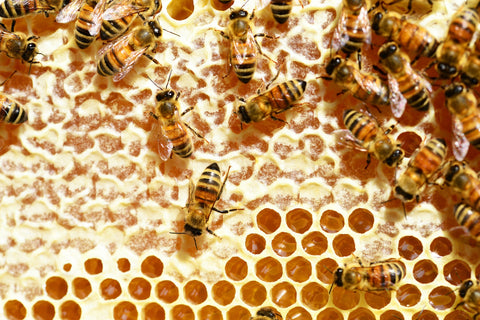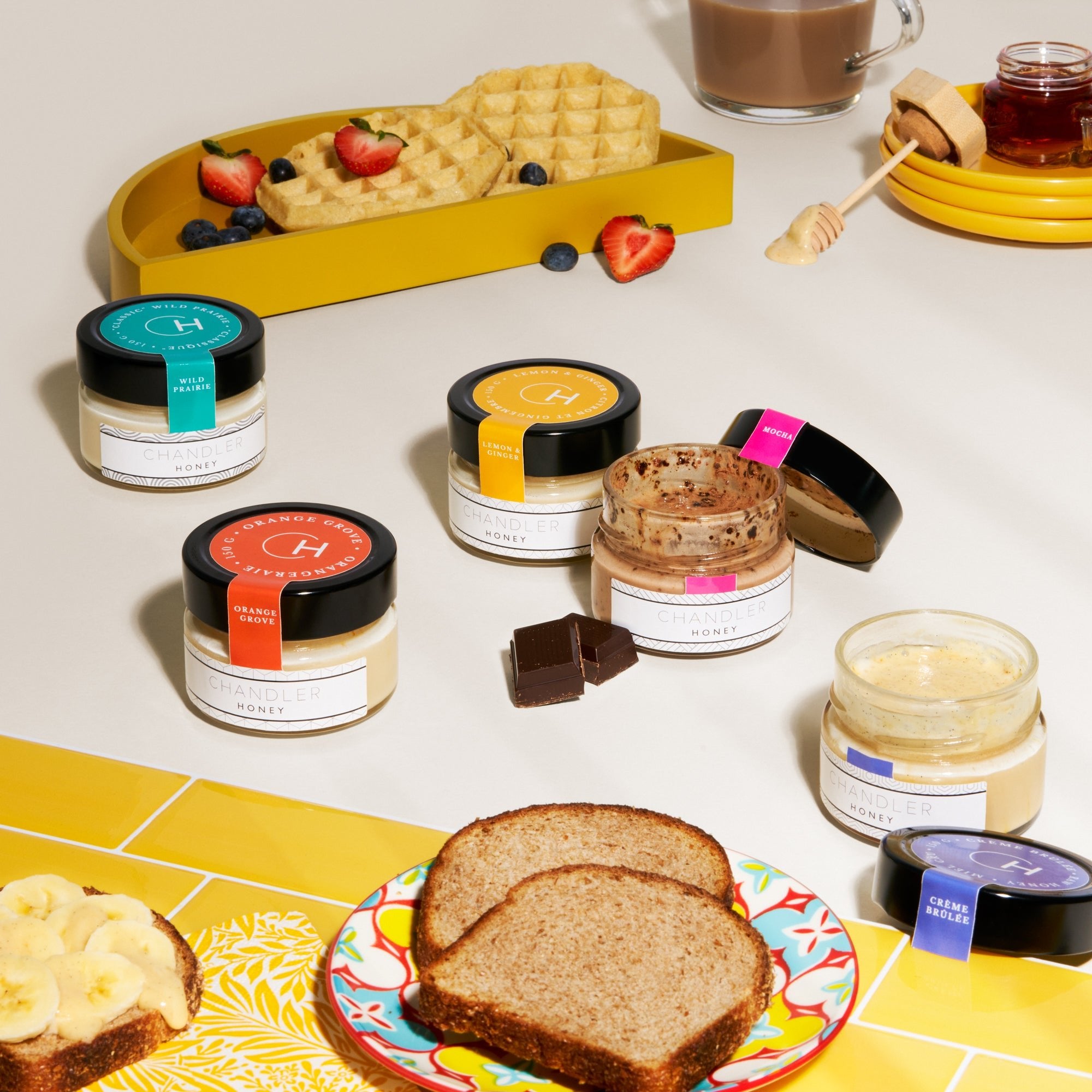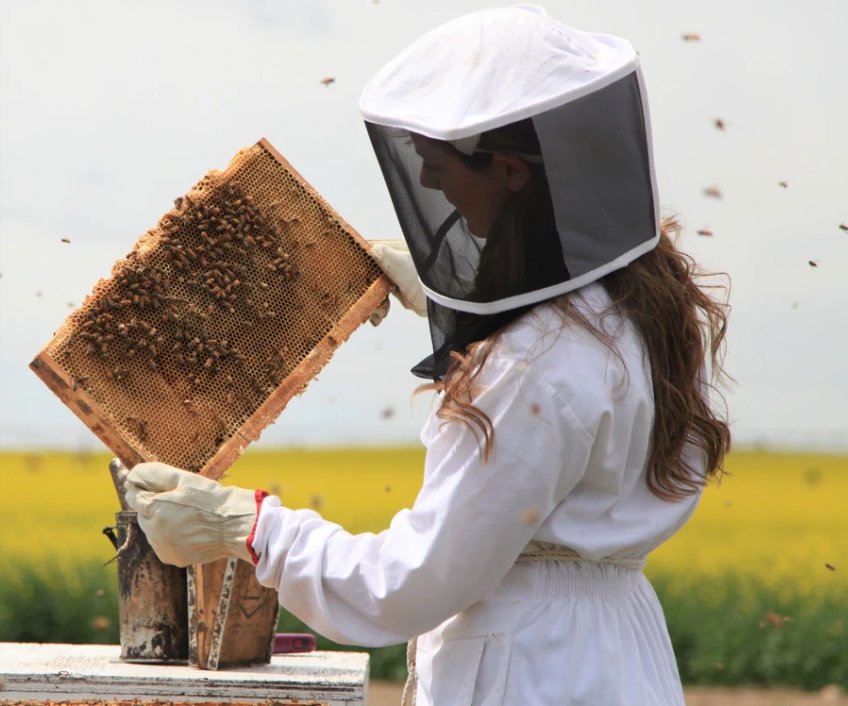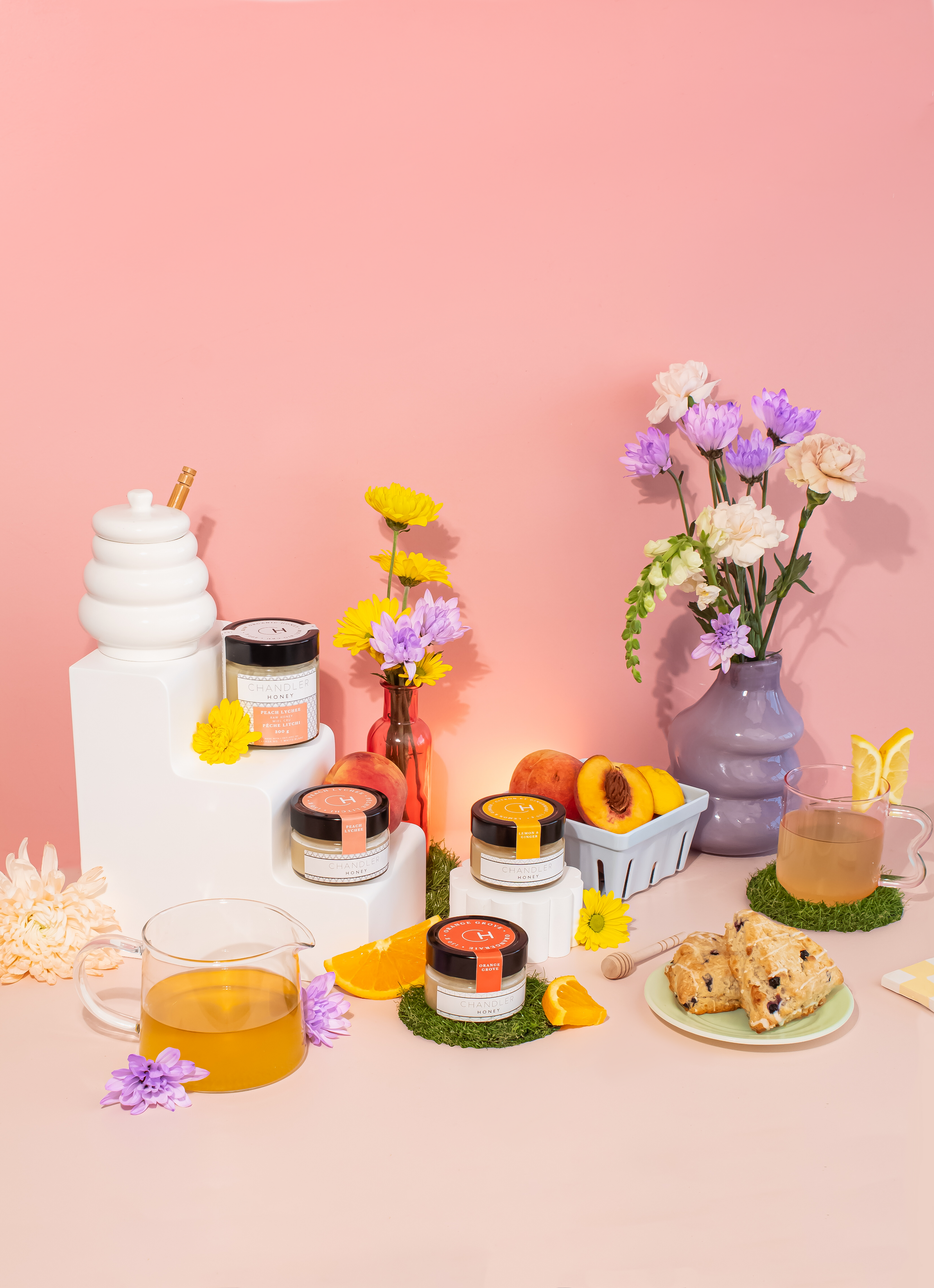Honey has been around for thousands of years, and it’s one of the best natural sweeteners on the market. You might be wondering how exactly the honey is made! The process of making honey can be broken down into three steps. If you wanted to condense it into one step, you can just say “made naturally by nature”
Step 1: The Flowers, Bees, and Hive
The honey process begins at the flower, where bees collect the watery and sugary nectar from inside the stamen (center tube) which they can access with their long tongues. The bees drink the nectar, store it inside their bellies, and bring it back to the hive.
The nectar is regurgitated back out from the bee, with the tongue guiding it to be stored inside the honeycomb. Combined with the natural enzymes from a bee’s stomach, it is now considered honey. The honey may still be quite watery at this point, which is not ideal for preserving for long periods of time, so the bees fan the honeycomb with their wings to evaporate some of the water. When it’s the perfect consistency, they cap the honeycomb cell with a thin layer of wax.
The flavour and colour of the raw honey all depend on the flowers where the nectar was originally collected. If bee’s collect nectar from buckwheat flowers, for example, you will notice that your honey is darker in colour and stronger in flavour. If the nectar is collected from alfalfa or clover, like much of Chandler Honey’s product, your honey will be lighter in colour and more mild.

Step 2: Extraction
The National Honey Board has stated that on average, a hive will produce 55 pounds of honey each year. Beekeepers will harvest the honey once it’s ready by scraping off the wax cap with hot spinning blades. Once they have removed the wax cap, they then place the frames into an extractor (also known as a centrifuge), which uses centrifugal force to force the honey out of the honeycomb while keeping the structure intact for the bees to reuse.
Following the extraction of the honey, it is strained to eliminate any leftover wax or other particles. After this process is complete, your honey is ready!

Step 3: Our Additional Processes
At Chandler Honey, our process doesn’t stop there. We add a few more (natural) steps to make the honey more creamy and shelf-stable. And, of course, we add our magic infusion ingredients.
Our raw honey is added to our small-batch creaming machine and carefully creamed for 24 hours. This machine stirs the honey at a uniform speed, which makes the honey take on a smaller and smoother granulation. This gives an even and creamy texture, without chemically processing the honey.
From there, all our ingredients are added by hand and gently stirred into the honey.
We then gently stir for 24 more hours, which allows the honey to be fully infused with flavour. It is then poured into jars by hand, with love added every step of the way. From there, the honey is all ready to be sent out to your home to be enjoyed!





Leave a comment